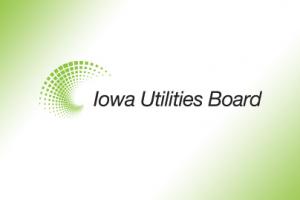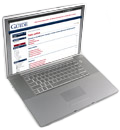Iowa Revises Approach to Standard Offer Rates

Confronting what has become a recurring issue for regulatory agencies across the country, the Iowa Utilities Board has adopted a new model for establishing avoided-cost rates payable by electric utilities for the purchase of energy and capacity from small qualifying facilities (QFs). The board noted that as renewable energy projects have gained an increasing share of the electric generation industry, utilities have grappled with existing tariff structures that are often out of sync with growing QF output. That situation led two of the state's largest utilities, Interstate Power & Light Company and MidAmerican Energy Company, to submit new tariff proposals relative to the price to be paid to those QFs with a rating of 100 kilowatts (kW) or less.
In response, the board countered with a pricing plan of its own that it averred would be simpler and more transparent. Under the board's method, a utility's avoided energy cost would be assumed to be equal to the hourly real-time locational marginal price (LMP) set by the Midcontinent Independent System Operator (MISO) for the appropriate load zone assigned to the utility. The utility's avoided capacity cost would then be deemed to be equal to MISO's Zone 3 capacity auction clearing price. For both, the cost would be adjusted to account for any related transmission or distribution line losses.
The board said it expected each utility's tariff would be designed to pass such values through to eligible QFs on a monthly basis. Moreover, it found that for purposes of calculating any associated net metering credits, the amount actually paid would be a weighted average of the real-time LMPs associated with a typical solar or wind resource generation profile.
In soliciting input on its plan from utilities and other affected stakeholders, the board stated that it was particularly interested in their assessment of whether the board's proposal was likely to assure a reasonable approximation of a utility's avoided costs and would be administratively efficient. The board added that it also wanted to know if others viewed its plan as consistent with QF rate requirements listed in the Public Utility Regulatory Policies Act of 1978 (PURPA) and if the suggested tariff provisions would offer QFs and other interconnecting customers the functional equivalent of access to MISO markets.
After examining the comments submitted by the utilities and others, the board declared itself satisfied that its plan would comport with PURPA. It asserted that MISO's wholesale LMPs would be a suitable measure of a utility's avoided costs, at least for as-available energy and capacity supplied by a QF. To that point, though, the board emphasized that its avoidedcost rate method would apply only to as-available purchases of QF power. That is, it clarified, the same approach would not necessarily be used for long-term agreements arising under a legally enforceable obligation (LEO).
The board distinguished between as-available sales of QF output and an LEO between a QF and a utility. The board stated that the former involves a short-term transaction while the latter involves an ongoing arrangement. According to the board, the Federal Energy Regulatory Commission (FERC) has mandated that standard rates be set forth for asavailable purchases but that FERC rules do not similarly require standard rates for sales occurring pursuant to an LEO.
Rather, the board elaborated, LEOs often give rise to negotiated, longerterm power purchase contracts. Those contracts may be of varying terms, with individual unit availability changing over time. As such, the board said, it would be impracticable to try to set uniform rates for all LEO-based sales.
The board remarked that while its avoided-cost rate method was aimed solely at those QFs with a design capacity of 100 kW or less, the utilities were not being foreclosed from offering the same rate to larger QFs. In fact, the board instructed the utilities to afford larger QFs the option of selling their energy and capacity to the utilities under the standard tariff applicable to smaller QFs.
In issuing that directive, the board observed that PURPA and FERC do not require the development of standard offer rates for larger facilities, but only for smaller ones. At the same time, however, neither did PURPA or FERC prohibit such rates for larger projects, it said. In light of the board's decision not to craft a single forecasted avoided-cost rate of its own for larger QFs, the board deemed it appropriate for larger QFs to decide for themselves whether to take advantage of the new standard rates.
The board maintained that largercapacity facilities may have operating characteristics, including varying supply and production, that make standard rates inapropos. However, the board held, it should be the choice of the larger QF as to whether to opt for the standard offer tariff.
Nevertheless, the commission predicted that few larger QFs would avail themselves of the standard rate, especially now that the capacity ceiling for net metering in the state has been raised. Re Interstate Power & Light Co. and MidAmerican Energy Co., Docket Nos. TF-2016-0290 et al., Aug. 18, 2017 (Iowa U.B.).



